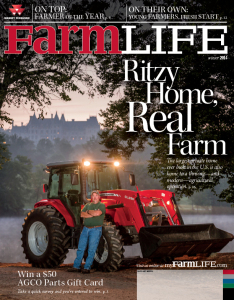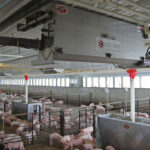Biltmore: Ritzy Home, Real Farm
Biltmore offers what is arguably the finest view of 19th-century American grandeur. The crowning achievement of George W. Vanderbilt—a grandson of 19th-century railroad and shipping magnate Cornelius “Commodore” Vanderbilt—the French Renaissance chateau-style mansion was completed in 1895 just outside Asheville,...
Biltmore: Ritzy Home, Real Farm
Biltmore offers what is arguably the finest view of 19th-century American grandeur. The crowning achievement of George W. Vanderbilt—a grandson of 19th-century railroad and shipping magnate Cornelius “Commodore” Vanderbilt—the French Renaissance chateau-style mansion was completed in 1895 just outside Asheville,...Biltmore offers what is arguably the finest view of 19th-century American grandeur. The crowning achievement of George W. Vanderbilt—a grandson of 19th-century railroad and shipping magnate Cornelius “Commodore” Vanderbilt—the French Renaissance chateau-style mansion was completed in 1895 just outside Asheville, N.C. It is the largest privately owned home in the U.S. and annually attracts more than 1 million visitors.
A growing number of those visitors, however, come to experience Biltmore’s farming operations. The estate’s winery is the most visited in the U.S., while a demonstration farm pays homage to Biltmore’s past, when the property, which was originally 125,000 acres, was self-sustaining.

Kevin Payne, Biltmore’s farm manager, is on the cover of the Winter issue of the Massey Ferguson customer magazine, FarmLife.
What’s not as well known is that Biltmore, which today encompasses 8,000 acres, is home to a variety of other farming enterprises, including cattle and sheep operations totaling some 1,500 animals. Though most of the estate’s acres are forested, crops such as corn, soybeans, canola, sunflowers and sudangrass are grown in any given year.
This is the realm overseen by Kevin Payne, Biltmore’s farm manager, who has worked on the property for 35 years. He understands the need to work the farm—but do it knowing that tens of thousands of paying guests are watching.
This attention to visual detail, though, doesn’t shortchange their efforts to farm with an eye toward a cutting-edge, sustainable ethos. For example, this spring and summer, 50 acres along hiking and biking trails were planted to canola, then sunflower crops. No doubt the bright yellow blooms of both were a treat for guests.
The plantings, though, were not all for show. The canola is processed on the farm (in a renovated 100-plus-year-old barn) into biodiesel used to fuel the businesses’ pickups and farm equipment. Livestock raised on the grounds—including some 700 head of Angus cattle and 800 White Dorper sheep—are used in the estate’s highly regarded restaurants.
Payne and his wife, Becky, have had the privilege of living on the estate for nearly 30 years. Their 100-year-old house is tucked just off a hilly road near the barn where livestock feed is stored. Becky homeschooled their three sons here, while their dad would have the boys measure out feed as part of their math lessons.
“It’s not so much work as it is a lifestyle to us,” says Payne. “The boys grew up here, staying in the woods all day.” One son, Carson, now works full time with Kevin—and lives on the property as well. “He’s never really left Biltmore,” says Payne. “We’ve been blessed.” Millions of visitors here would be inclined to agree.
Guess which brand of tractor is used to help care for this national treasure. Read why Massey Ferguson gets the nod at http://www.myfarmlife.com/features/biltmore-ritzy-home-real-farm/. You can also see the entire Winter issue of FarmLife by browsing the digital edition at http://www.myfarmlife.com/inside-the-magazine/browse-the-winter-2014-issue-of-farmlife/.



